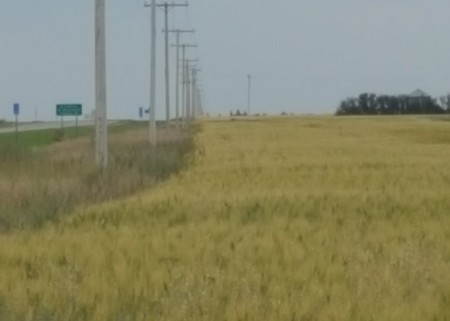Critical State – Timing
Bad timing. It takes a lot of blame when decisions don’t turn out. Not hitting the right time to apply fungicide is a great example. Not pricing grain at the right time is another. However, Mother Nature has shown her lack of timing in providing good growing and harvest conditions, but that is not in our control.
The two examples above are within our control. It is possible to watch crop development like a hawk to ensure we hit the optimum timing for fungicide application. It is well within our realm to know what is the optimum price to sell and then utilize derivatives of forward contracts to ensure we aren’t selling on emotion…or greed.
As was described when we first opened the discussion on Critical State, trying to time the commodity markets is like trying to pick winning lottery numbers. Expecting yourself, or your marketing advisor, to be able to “hit the highs” is unrealistic. While it may happen on occasion, if the cash flow projection only works when production is priced at the top of the market, it’s not a sustainable business tactic. It helps to first understand where a profitable price point is. To do this, one must know Unit Cost of Production.
Earlier this year, I was part of a meeting with a new client where we were dissecting their Unit Cost of Production (UnitCOP.) It was amazing, and rewarding, as the crop plan was being changed during our interaction right then and there because of the new level of awareness that UnitCOP brought. Another client reviewed my feedback on his UnitCOP projection for 2016, which wasn’t especially positive based on his expected yields and market price outlook, and yet after a long pause to let it all sink in, his response was “OK, I guess it’s up to me to make sure I grow all those bushels, or more if possible.”
Indeed.
As was described when we first opened the discussion on Critical State, there is also a right and a wrong time to make asset acquisitions, and/or take on more debt. Granted, credit is still cheap and easy; that doesn’t make it the right decision. Discount pricing or other incentives might be extremely inviting (that is the point) but it does not make it the right decision. The right decision will increase profitability, efficiency, and/or cash flow. It’s easy to tell when it is the wrong decision: either profitability or cash flow decrease; it is worse when it’s both. Call it the criteria that differentiates good debt from bad debt.
Even if it is good debt, the timing could still weigh heavily. If equity is tight, and the future outlook for profitability is slim, the timing could lead to Critical State. Think of it like a comedy routine: the best jokes that are sure to bring hilarity can be a bust if the timing is wrong.
Direct Questions
What process do you use to determine if the timing is right to make a specific decision?
For highly detailed people, there is always a reason that the timing is never right. How do you demonstrate that the decision should, or should not, be made?
What is your threshold for determining that the changes to profitability, efficiency, and cash flow have to be met before making the decision?
From the Home Quarter
Bad timing takes the blame for many decisions. But all it takes is solid planning, clear goals, and discipline to render “bad timing” to be nothing more than an excuse.




Leave a Reply
Want to join the discussion?Feel free to contribute!